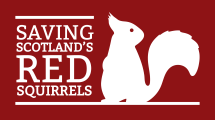…partners. The partnership is also supported by an extensive network of over 500 landowners covering well over 4,000 square kilometres. Saving Scotland’s Red Squirrels is grateful to all the organisations, trusts and individuals who help make our work possible. Nature Restoration Fund The Scottish Government’s Nature Restoration Fund is a commitment in the current Programme for Government for multi-year funding… […]
Read More…
…Scottish Squirrel Group have been tasked with drafting an ambitious 50-year vision for red squirrel conservation in Scotland. The revised Strategy will cover a 10-year timeline (2025 – 2035) informed by this vision, and will be developed using the International Union for the Conservation of Nature (IUCN) Guidelines for Species Conservation Planning, the gold standard for species conservation planning which… […]
Read More…
…the largest dedicated funder of the UK’s heritage, The National Lottery Heritage Fund’s vision is for heritage to be valued, cared for and sustained for everyone, now and in the future as set out in our strategic plan, Heritage 2033. Over the next ten years, we aim to invest £3.6billion raised for good causes by National Lottery players to bring… […]
Read More…
…specific volunteer openings can be found on the Scottish Wildlife Trust’s Volunteering Opportunities page. Do keep in touch with your local Conservation Officer or Community Engagement Officer if you have any questions or concerns. What should I do with my 2020 Spring Survey kit? Please read over the guidance and instructions below for your survey area: North East If… […]
Read More…
Over £1m in new funding has been announced to aid red squirrel conservation efforts in key areas across Scotland for the next two years. A total grant of £1,052,796 has been awarded by the Scottish Government’s Nature Restoration Fund, managed by NatureScot, which supports the restoration of wildlife and habitats across the country. The new funds will support the Scottish… […]
Read More…
…squirrels – which account for around 75% of the total UK population. Red squirrels are a protected species, but for many years have experienced declines due to the invasive non-native grey squirrel introduced to Britain from North America in Victorian times. Grey squirrels out-compete reds for food and living space and have rapidly replaced native red squirrel populations across most… […]
Read More…
The award-winning environmental charity Trees for Life stands at the forefront of rewilding in the Scottish Highlands, and for over 30 years has been working to nurture and expand ancient woodland fragments and reintroduce missing animals. Red squirrels are an iconic Scottish species and a key resident of the Caledonian forest, but habitat loss from deforestation, human persecution, and competition… […]
Read More…
…serve as refuges for red squirrels if their decline were allowed to continue. These predominantly Sitka spruce forests are not ideal habitat for red squirrels, but their very paucity can more or less exclude greys . They are also poor habitat for a range of other wildlife, so the strongholds need to be kept to restricted areas as far from… […]
Read More…
…commercial conifers – to red squirrels. The researchers, together with Ulster Wildlife, bring into question red squirrel conservation strategies that focus on the planting of such forests. Scotland’s conifer forests In Scotland, non-native conifer forests are planted for commercial purposes. By the 1930s red squirrel populations were in serious decline in the UK, but the extensive conifer planting that… […]
Read More…
…practices (i.e. cleaning feeders regularly and with disinfectant) for reducing the risk of squirrelpox outbreaks. For the final chapter of my thesis, I aim to collate all of my findings to produce management recommendations for the study site and other red squirrel strongholds, in order to benefit long-term conservation efforts. We need to make sure that we make space for… […]
Read More…
